What’s The Standard Swimming Pool Sizes?
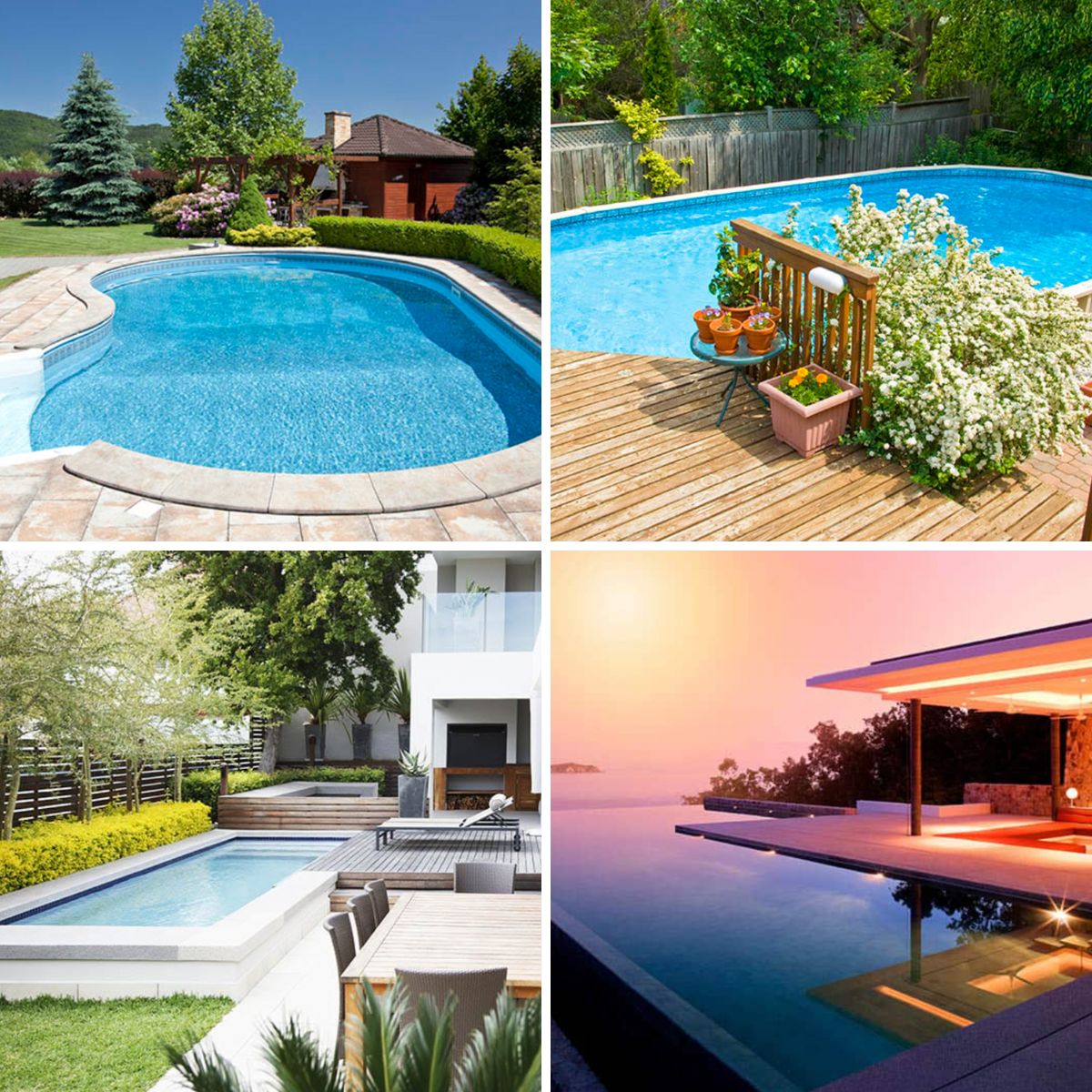
Swimming pools are a multi-functional item to install in your home. They can be used for everything from family swims to parties and even fitness endeavors, including everything from casual workouts to rigorous training. However, there are a lot of considerations that you need to make before committing to a home renovation or purchasing one. One of the most basic things to consider is how much space you have. This will help you decide not only if you can have a pool on your property but also the type that would best fit your size requirements.
Standard Swimming Pool Size
When it comes to the average swimming pool size, there are a lot of factors to consider. This includes concepts such as what type you have installed, the material, and the shape.
The dimensions of a pool must of course be governed by the amount of space available for the construction of the same. – Swimming Pools Their Construction, Mechanical Installation, Water Supply; Heating the Water; Various Types of Installation. With More Than Thirty Illustrations and Charts, John Kermott Allen, Alfred Grant King
Generally, the size of is represented by two dimensions – length and width. A 2-to-1 ratio determines the numbers compared to the size of the average backyard.
Given these factors, the average rectangle-shaped sizes fall to about three main measurements:
• 16 by 32 feet (Small)
• 15 by 36 feet (Medium)
• 20 by 40 feet (Large)
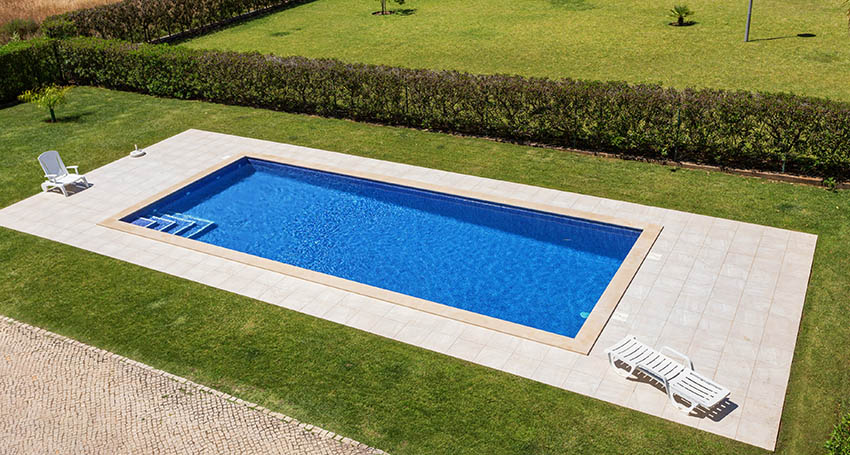
If you want to create a backyard layout from scratch there are many different pool design software programs that can help. With these programs, you can input your exact backyard measurements create and visualize this structure and add features such as decks and patios.
Inground Pool Dimensions
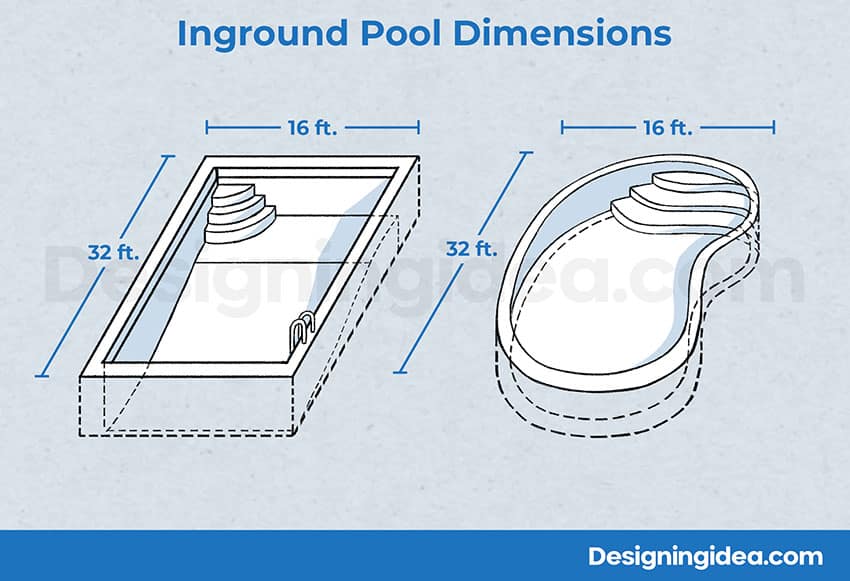
Inground types are often valued for their permanence and their clean appearance. The size of an inground type, on average, often depends greatly on the material it’s made out of.
For vinyl types, there are three primary sizes that people consider are usually 16 by 32 feet, 18 by 36 feet, and 20 by 40 feet. Out of these rectangular shapes, 16 by 32 feet is the most common choice.
Those made of concrete, on the other hand, often have a kidney shape rather than an oval shape. The most popular size for these is 16 by 32 feet. Finally, there are fiberglass variants that usually have a more freeform shape. They are often sized close to 12 by 24 feet.
Above Ground Pool Sizes
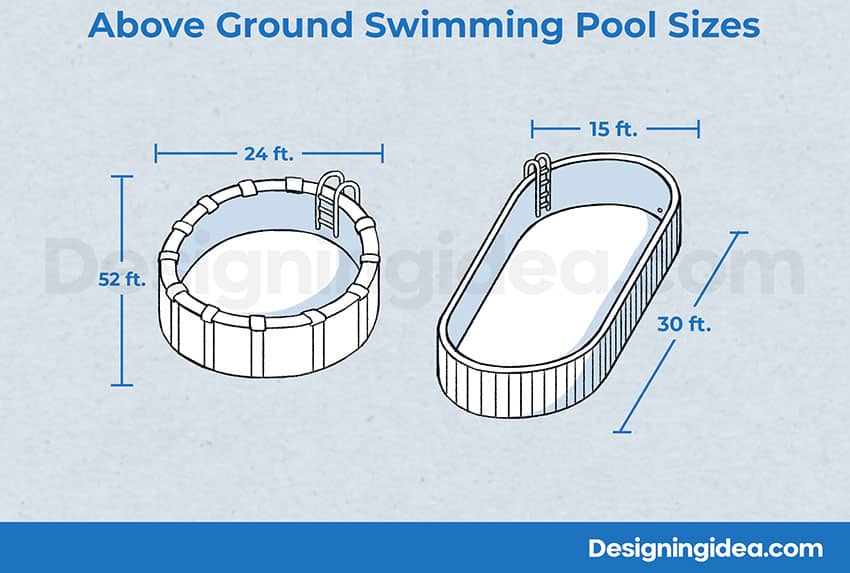
Above ground types have the advantage of an easier installation because they don’t require any digging into your yard. This also makes them easier to remove if you want the pool removed years after the installation.
Above ground variants typically come in about three sizes. This includes the smallest side of the average at a round, above ground type of 21 by 52 feet.
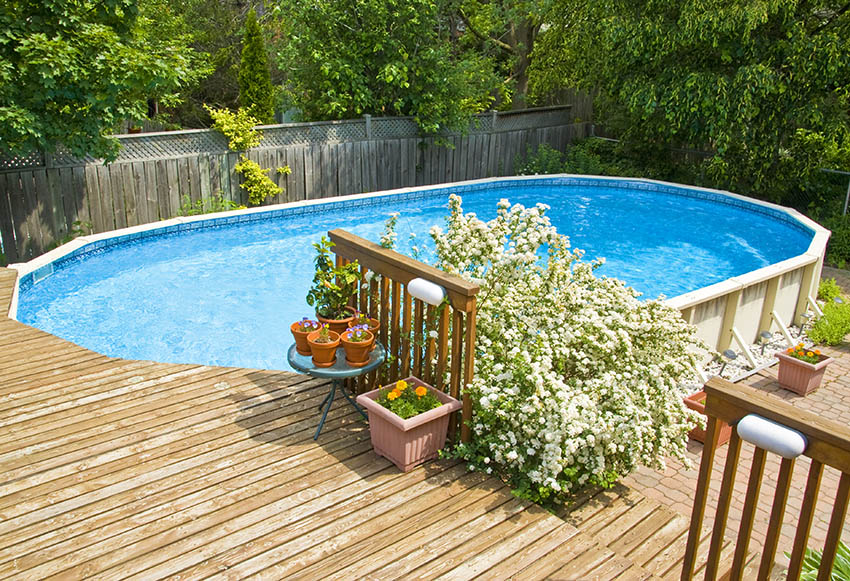
For a large above ground variant, an oval with measurements of 15 by 30 feet by 52 inches high is also common. The most popular size, though, is a round shape with dimensions of 24 by 52 feet. This popular size costs an average of $1,000.
Lap Pool Dimensions
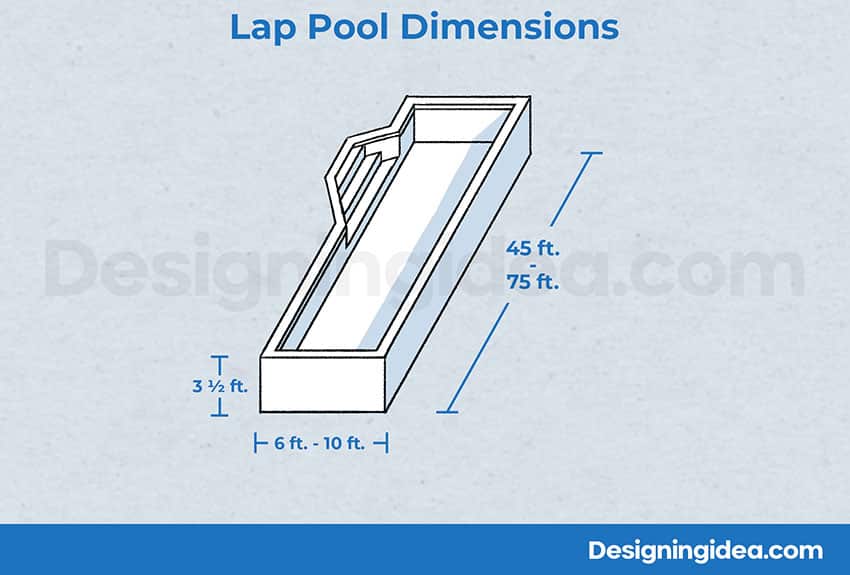
As the name suggests, a lap pool is built so that the user or users can comfortably swim laps in it. However, it isn’t quite wide enough to allow for the same room for “swimming around” as a round family type. So, there is generally a long and narrow factor to account for this.
Custom lap variants range in size, with a standard size being 45 feet in length to 75 feet. They generally have a width of 6 to 10 feet and a depth of at least 3 1/2 feet to prevent swimmers from bumping their heads or scraping arms and legs while swimming laps.

A professional lap pool is much bigger than the average lap variant that would fit in a residential area. Professional lap types have a length of about 82 feet or 25 meters. Away from the gym, though, 40-foot long variants are considered lap types as well.
Plunge Pool Measurements
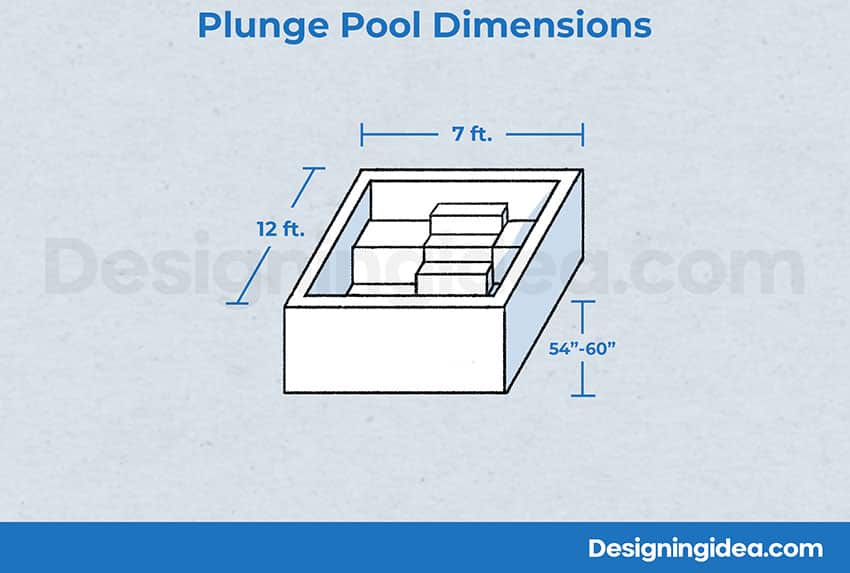
A plunge type is typically made to be deep but it isn’t necessarily committed to a lot of other requirements. Instead, they’re often defined by their use. They are either used at the base of a flow of water or, more professionally, meant to be kept cold to follow the use of a sauna or hot tub. Either way, they should be deep enough to submerge the whole body in.
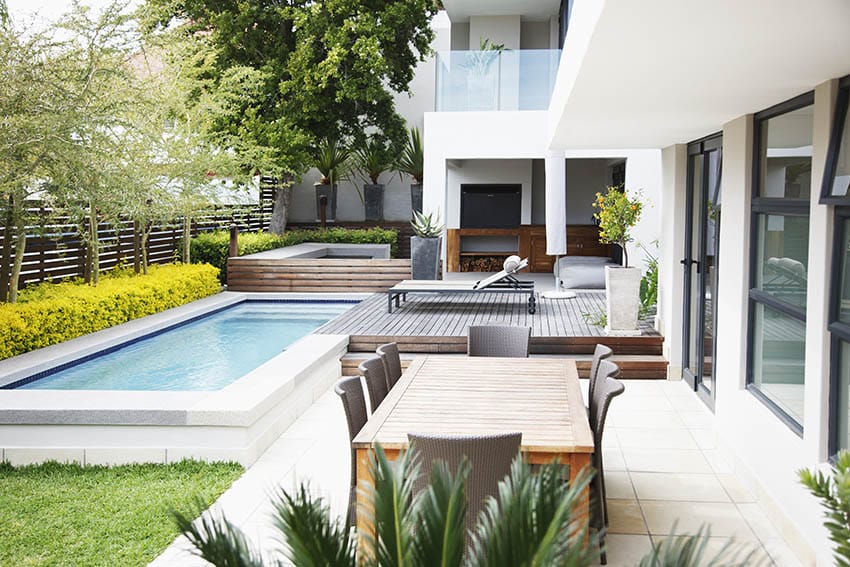
The average size of a plunge type is about 7 by 12 feet. As for depth, the most common choice is a range of 54 to 60 inches deep.
Olympic Pool Measurements
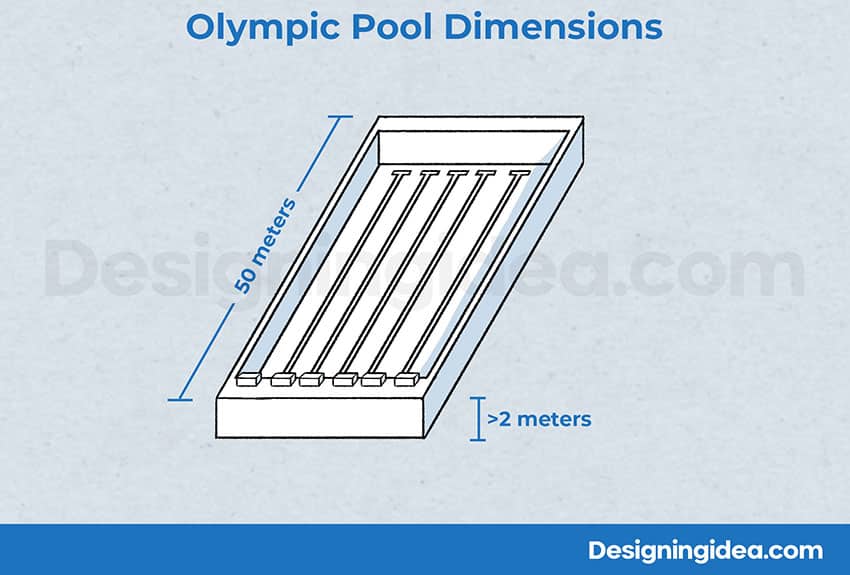
Olympic swimming pools are a little stricter in their dimensions. This is because they’re made to fit the requirements to host international competitions. In other words, they are going to fit the size that you’d see when you watch the Olympic Games. This also means they’re mostly considered a commercial investment – most families don’t need this much space, have the budget, or want the high maintenance required.
An Olympic-sized type must be at least 50 meters long and a width of 10 lanes. In addition, they’re usually at least two meters deep and hold at least 500,000 gallons of water although they can hold up to an average of 660,000 gallons as well.
Endless Pool Sizing
Endless pools are an interesting invention that goes above and beyond the average backyard type. They are made primarily for exercise and actually have a current powered by special equipment
The user is meant to swim against the current, usually to stay in place, giving it an illusion of endlessness.
Despite the name, they use this illusion to save space. Thus, you don’t need to worry about massive dimensions to include this type of outdoor structure on your own property.
The average dimensions for an endless type are about 7 by 14 feet, with smaller and larger models and different options available.
L-Shaped Pool Sizing
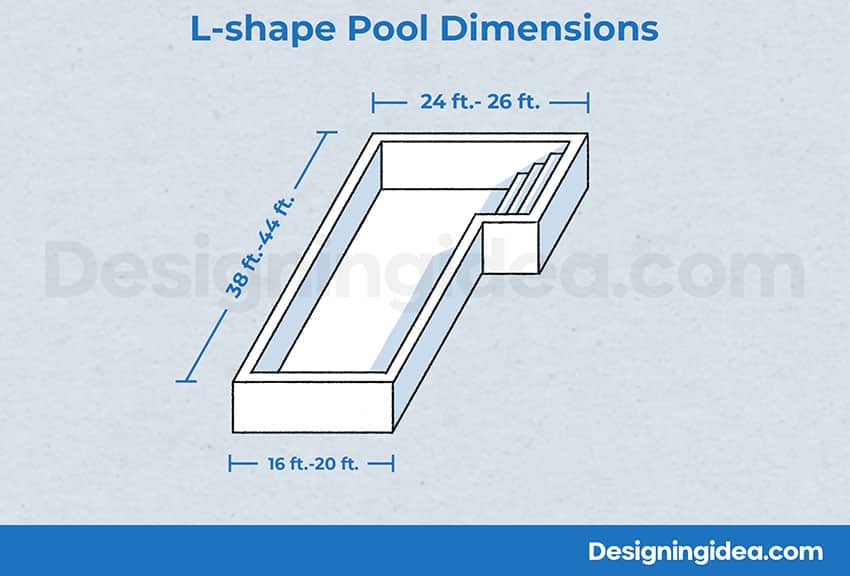
L-shaped pools are exactly what they sound like. As the name suggests, they’re in the same shape as the letter “L.” Put another way, it makes a right angle. This shape often allows the owner to make a clear distinction between the deepest and most shallow ends rather than a subtle downward slope.
The dimensions are measured a little differently than two clear dimensions like other options. The longest side often measures between 38 feet and 44 feet, the shortest side usually measures between 16 and 20 feet. Finally, the side that makes up the base of the “L” is usually between 24 and 26 feet.
Size Of Small Pools
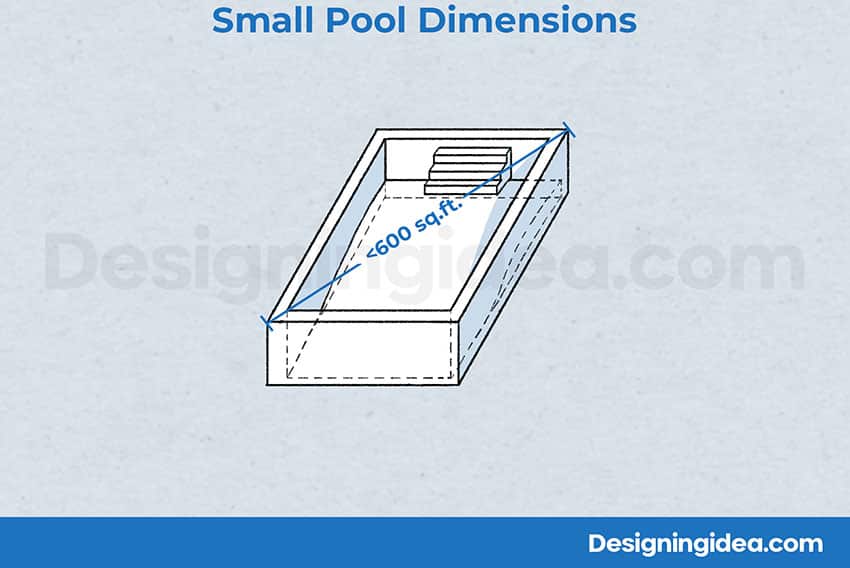
If you want or only have room for a small swimming pool, you might be wondering how small that actually is. Generally speaking, the average small variant is considered one that totals 600 square feet or less. This leaves room for you to tailor that space to the type you want.
What Is a Good Size Pool?
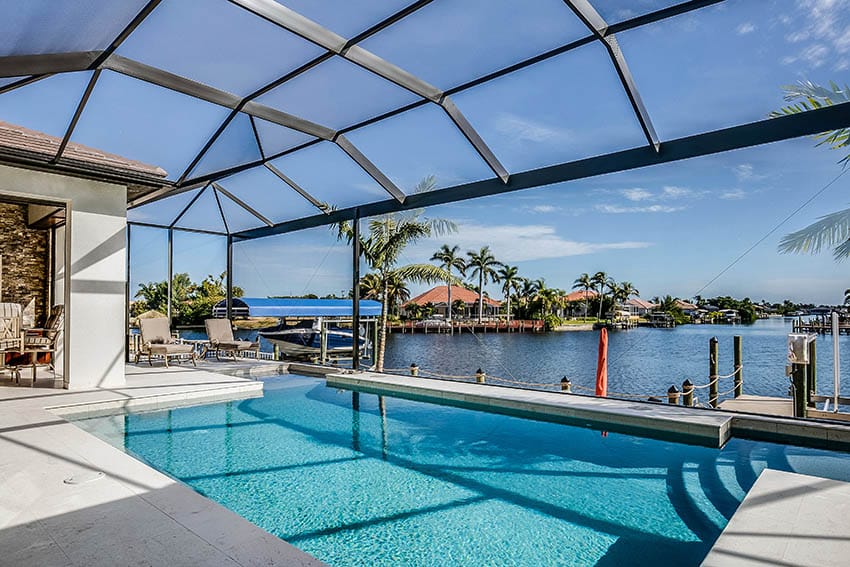
When you just want a pool that’s big enough for your family to swim in, perhaps with a few friends, there are some reliable sizes.
The most common choice for sizes is 18 by 36 feet. This will give you enough room to swim around and play games without even up to eight people in it crowded too closely together. This is often recommended for rectangular-shaped types. You can see our gallery of swimming pool shapes for more ideas here.
What Is a Good Pool Depth?
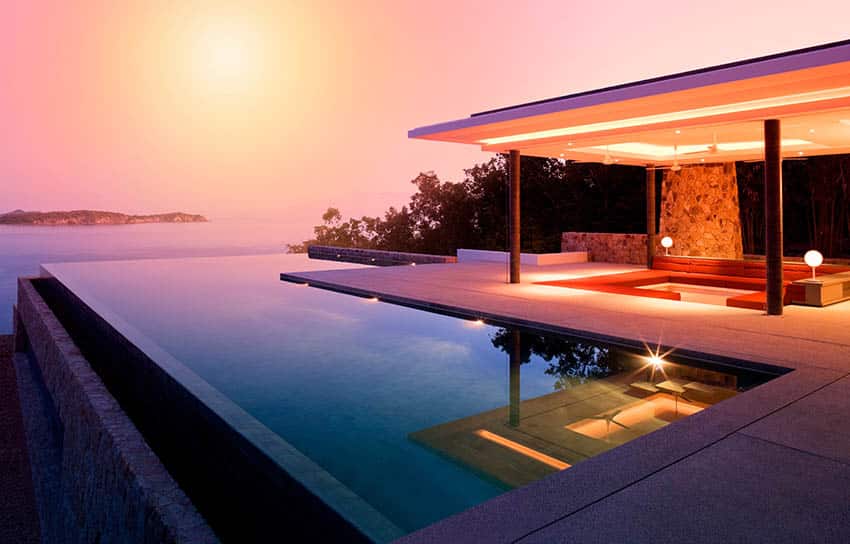
The depth is less limited than its size. After all, depth doesn’t have the same constraints as width and length, like the size of the property. Yet, there are still some standard, go-to depths that should be considered. The average option for a family is sloped, giving it a depth of three feet in the shallow end and six feet deep at the deepest point.
On the other hand, if it is mainly used for swimming laps or exercise, you can install it with a uniform depth of around four to five feet. If you’re considering this structure you can get free estimates and prices from a local company. They can help you narrow down a type that is best for your lifestyle and give you more insight into models, potential maintenance costs, warranty period, and answer questions you have.

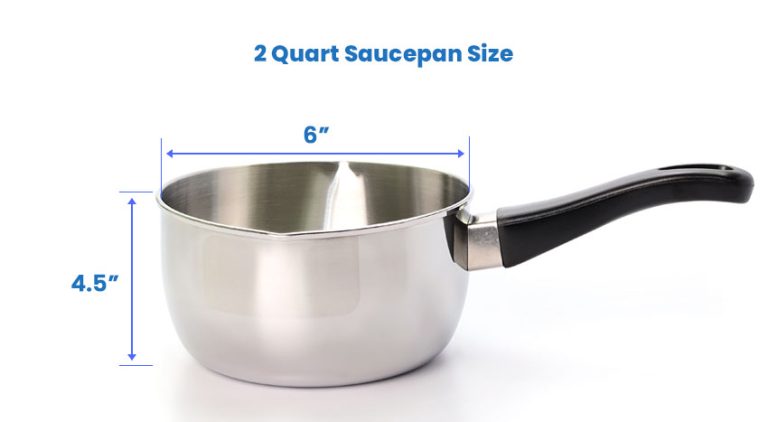
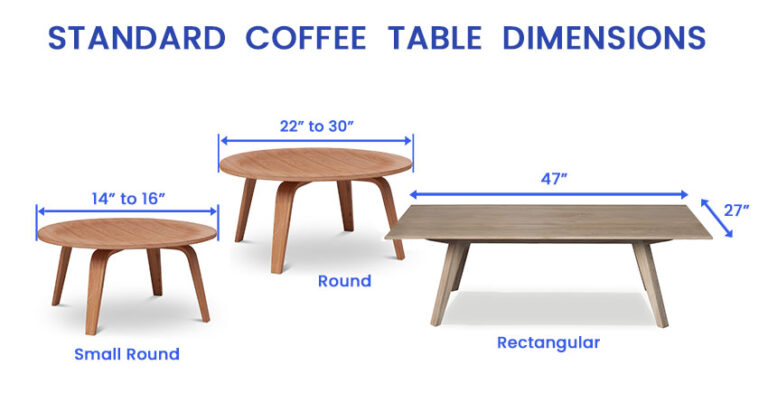
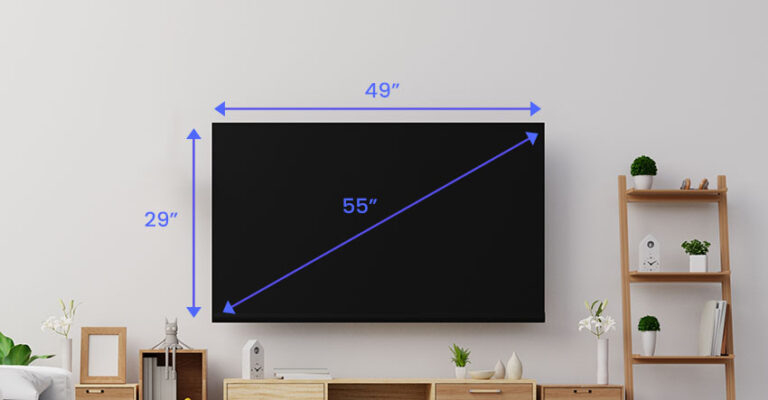
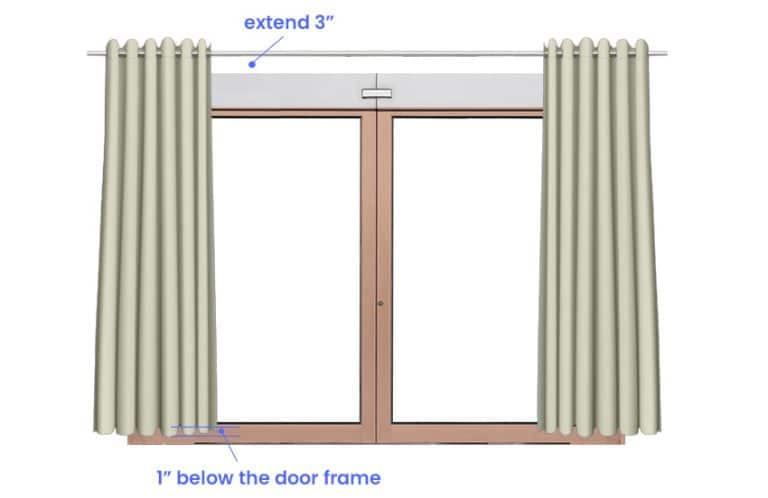
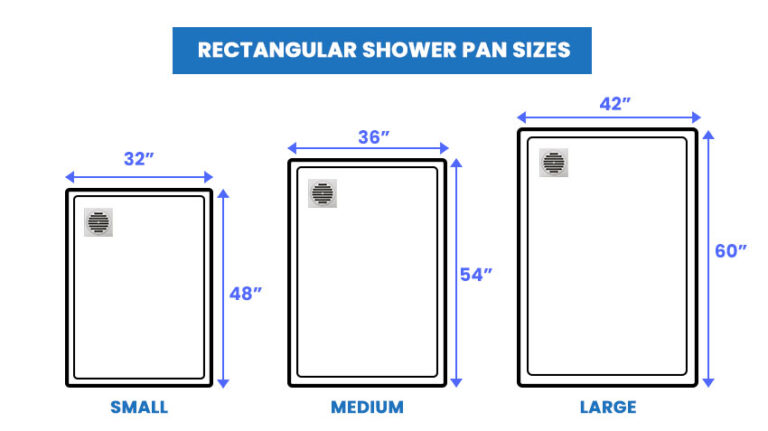
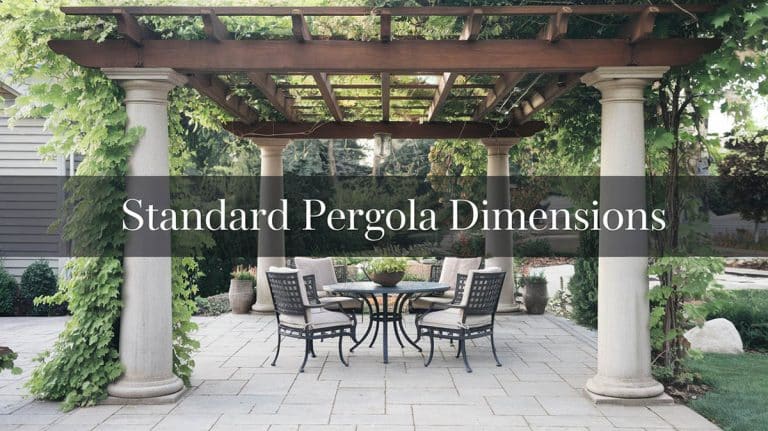
I have been looking for the type of swimming pool on various websites but could not be satisfied until I reached on your website.
I am looking for a professional kind to provide in backyard of my restaurant. One for families with kids and children and another for adult males including teenagers. Please assist in selecting one.
“For a large above ground pool, an oval with measurements of 15 feet by 30 feet by 52 feet is also common.”
It took me a several minutes to realize, do you mean 15 feet by 30 feet by 52 inches? (a 4 foot high pool)? If you had a typo, it might be throughout this article. If not, I’m confused by the dimensions.
Good catch, we’ve changed that to specify inches.